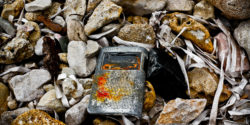Eleven months after opening a proceeding to consider allowing AM stations to go all-digital, the FCC appears ready to render its verdict later this month. According to Radio World’s Paul McLane, “[B]ased on anecdotal evidence, the commission will likely approve it.”
To recap, the Commission is considering proposals to allow AM stations to voluntary convert to all-digital HD Radio transmission, turning off their analog signals entirely. The purported benefits are better fidelity with no audible noise or interference. The tradeoff is that digital stations will effectively disappear from analog AM receivers, which make up the vast majority of radios.
It is true that about half of all car radios on the road now are HD Radio capable, and that the car is the site of large proportion of terrestrial radio listening. However, HD Radio has very little presence outside the car. It seems to be a big bet to cut off anywhere from a quarter to nearly a half of your listeners by ditching analog radios.
That is the takeaway from the experience of oldies station WIOE-AM in Fort Wayne, IN, which converted to all-digital this past May as an experiment. According to Inside Radio, the station turned the analog signal back on in early June after getting complaints from listeners, some of whom assumed that technical difficulties were to blame.
On the surface, an oldies music format would appear to be a fitting application for digital AM, with the tunes better served by the increased fidelity and reduced noise. At the same time, the older audience is probably less likely to be listening in cars, and even less likely to have an HD Radio capable home receiver.
For what it’s worth, the other station conducting experimental all-digital broadcasts in Maryland reports more positive results, saying that an HD Radio awareness campaign has resulted in it showing up in the Nielsen ratings for the first time.
True All-Digital AM Very Unlikely
Gazing into the crystal ball, Radio World quotes a “veteran engineering professional” who predicts that no major radio company is likely to invest in all-digital AM. Of course, those are the companies that own the vast majority of stations.
If the FCC chooses to authorize voluntary all-digital AM broadcasts, it will be consistent with the Commission’s overall strategy on digital radio. HD Radio, the current digital standard, is also voluntary and squeezed into the current analog dial. By comparison, most other countries with digital radio dedicated separate spectrum to use the DAB or DRM standards. While those systems also required new receivers, the promise of fresh and differentiated programming – like BBC 6Music – gave listeners an incentive to invest in new radios, which cost as little as $50.
On the other hand, the commercial radio industry has provided little incentive for listeners to switch to HD Radio from a content perspective. Mostly it’s just been the promise of lower noise digital sound. While there are at least a dozen different HD2 or HD3 digital-only signals in any major market, they’re generally poorly advertised, and many of them are just repeaters of an AM or just used as a way to feed an analog translator repeater station.
US Digital Radio Continues To Be Weak
By failing to commit the US to a true all-digital broadcasting standard, the FCC and Congress have consigned the nation to a digital radio system that is still unknown by the average person because it offers nebulous benefits. Certainly the broadcast industry has been successful in forging adoption of HD Radio in dashboards, but since the average car is on the road for more than a decade, this has been a very slow road. The adoption outside vehicles is pretty much a failure.
Letting AM stations voluntarily switch to all-digital will be just as weak and ineffective.
My principal concern for all-digital AM broadcasting is that it would undermine the vital emergency communications service these stations provide. During a hurricane, super storm, wildfire or other natural disaster when power and cellular service are cut or intermittent, a person’s lifeline is often that battery operated analog radio receiver. Who is going to run out to the car to tune in that HD station in the midst of 75 MPH winds?
But if it turns out that most major broadcasters won’t be interested all-digital AM, then the worst-case scenario of a disappeared analog band probably won’t come to pass.
Instead it will be just another weak step in the so-called AM revitalization initiative, which has really just been about giving FM translator stations to AM broadcasters. And that’s just a bribe to entice them to keep their AM stations, by making the FM frequency contingent on staying on the AM band.
Seems like a lot of time in the kitchen to cook up a very weak sauce.
Feature image credit: N Migo / flickr (CC BY-NC-SA 2.0)



